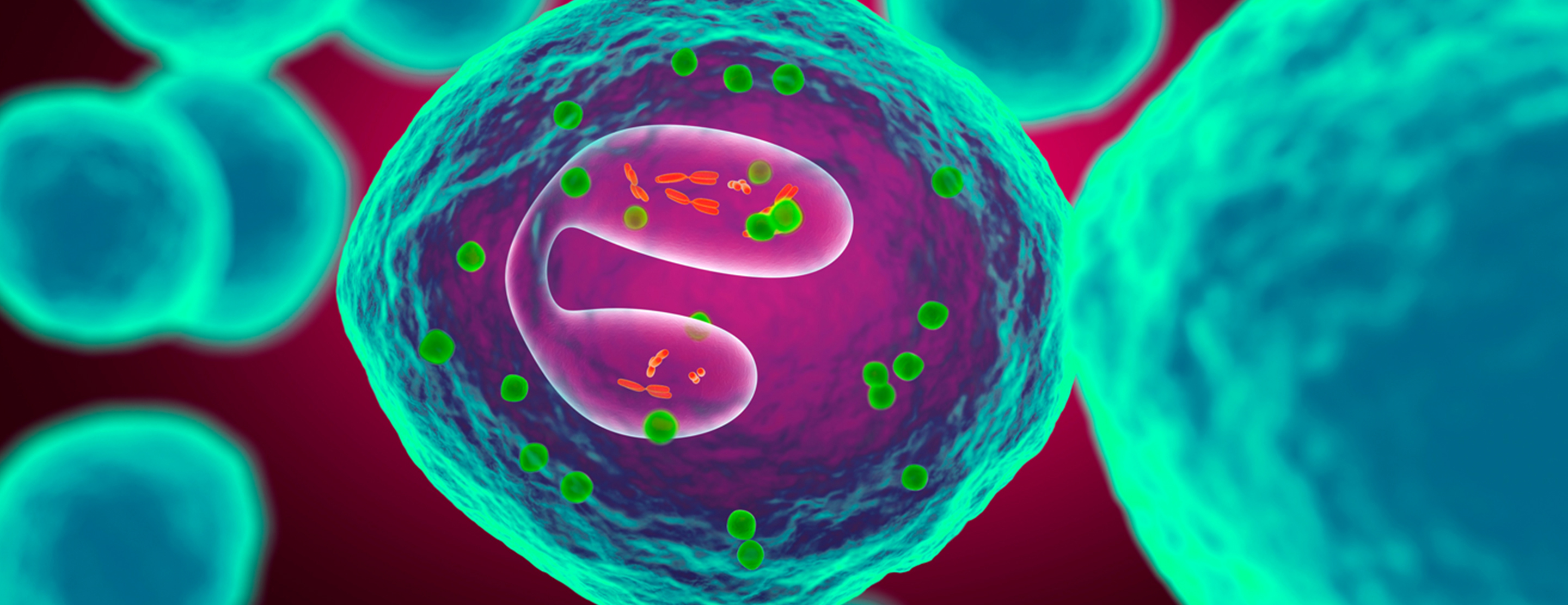
Eosinophil count - absolute
Definition
An absolute eosinophil count is a blood test that measures the number of one type of white blood cells called eosinophils. Eosinophils become active when you have certain allergic diseases, infections, and other medical conditions.
Alternative Names
Eosinophils; Absolute eosinophil count
How the Test is Performed
Most of the time, blood is drawn from a vein on the inside of the elbow or the back of the hand. The site is cleaned with an antiseptic. The health care provider wraps an elastic band around your upper arm to make the vein swell with blood.
Next, the provider gently inserts a needle into the vein. The blood collects into an airtight tube attached to the needle. The elastic band is removed from your arm. The needle is then removed and the site is covered to stop bleeding.
In infants or young children, a sharp tool called a lancet may be used to prick the skin. The blood collects in a small glass tube, or onto a slide or test strip. A bandage is put on the spot to stop bleeding.
In the lab, the blood is placed on a microscope slide. A stain is added to the sample. This causes eosinophils to show up as orange-red granules. The technician then counts how many eosinophils are present per 100 cells. The percentage of eosinophils is multiplied by the
How to Prepare for the Test
Most of the time, adults do not need to take special steps before this test. Tell your provider the medicines you are taking, including the ones without a prescription. Some drugs may change the test results.
Medicines that may cause you to have an increase in eosinophils include:
- Amphetamines (appetite suppressants)
- Certain laxatives containing psyllium
- Certain antibiotics
- Interferon
- Tranquilizers
How the Test will Feel
You may feel slight pain or a sting when the needle is inserted. You may also feel some throbbing at the site after the blood is drawn.
Why the Test is Performed
You will have this test to see if you have abnormal results from a
This test may help diagnose:
- Acute hypereosinophilic syndrome (a rare, but sometimes fatal leukemia-like condition)
- An
allergic reaction (can also reveal how severe the reaction is) - Early stages of
Addison disease - Infection by a parasite
Normal Results
Normal eosinophil count is less than 500 cells per microliter (cells/mcL).
Normal value ranges may vary slightly among different laboratories. Talk to your provider about the meaning of your specific test results.
The example above shows the common measurements for results of these tests. Some laboratories use different measurements or may test different specimens.
What Abnormal Results Mean
A high number of eosinophils (eosinophilia) are often linked to a variety of disorders. A high eosinophil count may be due to:
- Adrenal gland deficiency
- Allergic disease, including hay fever
Asthma Autoimmune diseases Eczema - Fungal infections
- Hypereosinophilic syndrome
- Leukemia and other blood disorders
- Lymphoma
- Parasite infection, such as worms
A lower-than-normal eosinophil count may be due to:
- Alcohol intoxication
- Overproduction of certain steroids in the body (such as cortisol)
Risks
Risks from having blood drawn are slight, but may include:
- Excessive bleeding
- Fainting or feeling lightheaded
- Hematoma (blood accumulating under the skin)
- Infection (a slight risk any time the skin is broken)
Considerations
The eosinophil count is used to help confirm a diagnosis. The test cannot tell if the higher number of cells is caused by allergy or parasite infection.
References
Klion AD, Weller PF. Eosinophilia and eosinophil-related disorders. In: Adkinson NF, Bochner BS, Burks AW, et al, eds. Middleton's Allergy: Principles and Practice. 8th ed. Philadelphia, PA: Elsevier Saunders; 2014:chap 75.
Roberts DJ. Hematologic aspects of parasitic diseases. In: Hoffman R, Benz EJ, Silberstein LE, et al, eds. Hematology: Basic Principles and Practice. 7th ed. Philadelphia, PA: Elsevier; 2018:chap 158.
Rothenberg ME. Eosinophilic syndromes. In: Goldman L, Schafer AI, eds. Goldman-Cecil Medicine. 25th ed. Philadelphia, PA: Elsevier Saunders; 2016:chap 170.
Review Date: 02/02/2019
The information provided herein should not be used during any medical emergency or for the diagnosis or treatment of any medical condition. A licensed physician should be consulted for diagnosis and treatment of any and all medical conditions. Call 911 for all medical emergencies. Links to other sites are provided for information only -- they do not constitute endorsements of those other sites. Copyright ©2019 A.D.A.M., Inc., as modified by University of California San Francisco. Any duplication or distribution of the information contained herein is strictly prohibited.
Information developed by A.D.A.M., Inc. regarding tests and test results may not directly correspond with information provided by UCSF Health. Please discuss with your doctor any questions or concerns you may have.





